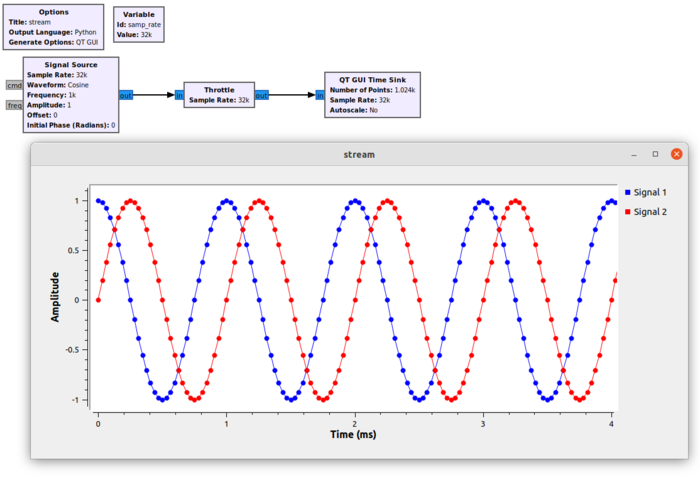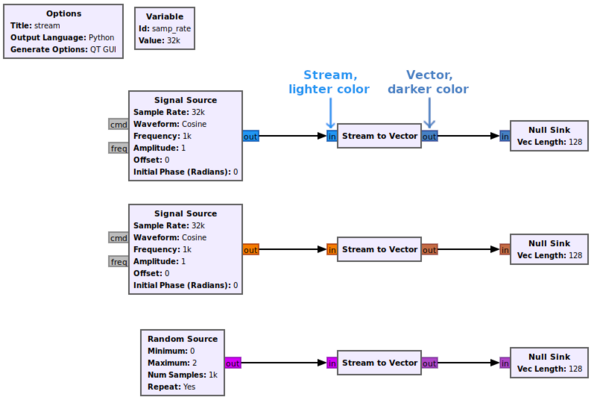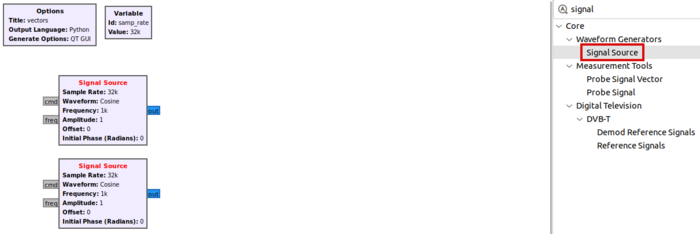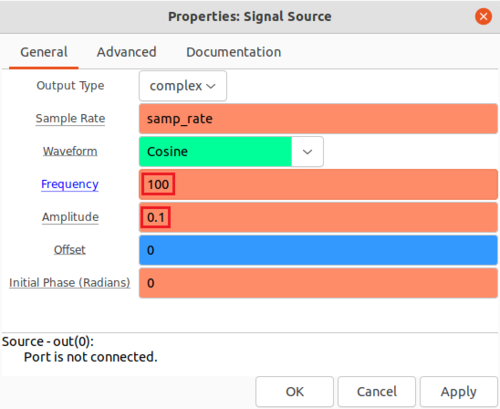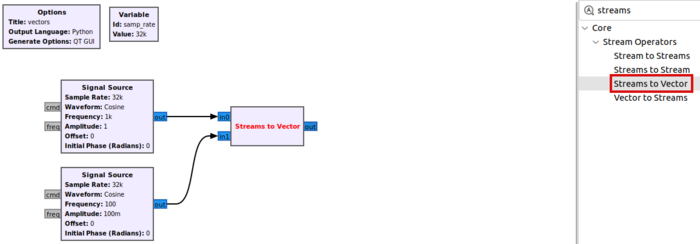Streams and Vectors
This tutorial will describe the difference between a Stream and a Vector. You can find the previous tutorial here: Converting Data Types
Streams
Streams in GNU Radio are what convey the information between blocks and are represented by the arrows connecting blocks in a flowgraph. A stream must have a data type, such as Float 32 or Byte. A stream carries 1 sample for each time instance and are used to represent and process serial data.
The Signal Source block produces a Complex Float 32 stream. The output of the block at each time instance contains 1 complex sample:
Vectors
Vectors carry multiple samples per time instance, representing data in parallel. By analogy, a stream represents a scalar at each time instance whereas a vector represents an array at each time instance.
GRC uses lighter colors to represent streams and darker colors to represent vector outputs:
Streams and Vectors Flowgraph Example
The following example will describe how to convert a stream to a vector and back to a stream. Two complex sinusoid streams will be converted to a 2-element vector, displayed, and then converted back to their independent streams.
Add two Signal Source blocks to the workspace:
Edit the parameters of the second Signal Source to have a frequency of 100 and amplitude of 0.1 to distinguish it visually from the first Signal Source:
Click OK to accept the parameters.
Search for the Streams to Vector block, drag it into the workspace and connect it to the Signal Source blocks:
The Streams to Vector block acts as an interleaver, taking the two serial stream inputs and converting them to a two-dimensional vector output. The block takes the sample from the in0 port and places it into the first element in the output vector, and then takes the a from the in1 port and places into the second element in the vector.
